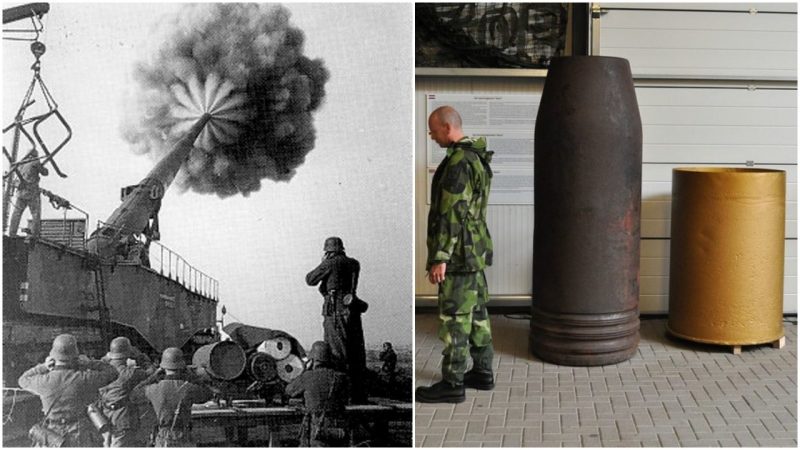The Nazis attempted to create superior and devastating weapons, ones that the Allies could not match. Naturally, those weapons had to be bigger than anything ever seen. Luckily for the Allied troops, many of the German weapons never made it out of the planning stage. However, there are a few frightening weapons the Nazi armed forces did manage to produce. One of those is the largest and the deadliest gun the world–the Great Gustav.
Named Schwerer Gustav in German after Gustav Krupp, who was at that time head of the manufacturers Friedrich Krupp AG, it was the biggest artillery weapon ever to be used in combat, and it fired the heaviest shells. Great Gustav was built prior to the occupation of France, and its role was to penetrate the fortified walls of French Maginot Line. Hitler needed a gun that could punch through 39 inches of reinforced steel wall, or 23 feet of reinforced concrete wall, and be beyond the reach of the French artillery at the same time.
The best producers of weapons had to be hired for the construction of this gun. Krupp AG, the most prominent steelworks and munitions company in Germany, was assigned the task. Krupp was a 400-year-old company based in Essen. The company played important roles in both the world wars as one of the biggest producers of artillery, shells, ammunition, and other steel products. Krupp’s variety of products were enormous, as they produced U-boats, battleships, howitzers, and hundreds of other items.
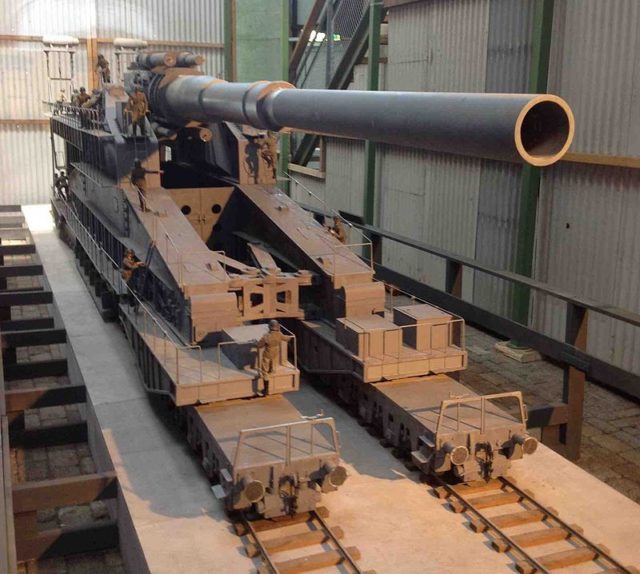
The Wehrmacht first approached the company in 1934 to provide information about a “hypothetical” gun, but nothing happened until 1936, when Hitler himself visited the factory in Essen, requesting fabrication of the huge weapon. He wanted the gun finished by 1940, and the plans were completed by the company early in 1937. After approval of the design by the Nazi leader, Krupp began production in the middle of 1937. However, as a weapon of that enormous size required a great deal of time to be built, it became clear that the product could not be delivered until 1941.
The engineer Erich Müller was put to the task. His calculations was that the Nazis would need a weapon with a caliber of 31.5 inches, capable of delivering a projectile with the weight of 7 tons, fired from a 107-feet-long barrel. The weapon’s weight itself would be more than 1,000 tons, and it had to be mobile. Krupp AG designed the weapon as a railway gun because that was the only way to move it. Great Gustav was moved on a selected curved section of rails in order to aim it.
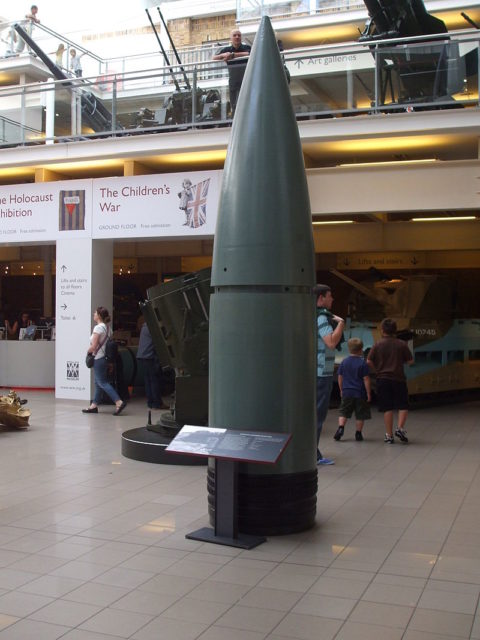
A test model of Great Gustav was fired at the Hillersleben testing grounds in 1939. At the test, the 7-ton shell successfully penetrated both a 23-foot concrete wall and 39 inches of steel armor plate. The tests were finished in mid-1940, and Adolph Hitler was invited to the last presentation. Gustav Krupp’s son, Alfred Krupp, personally presented the weapon to Hitler at the Rügenwalde Proving Ground. In early 1941, the production of the weapon was officially accepted.
The Nazis had ordered two guns. The first gun, Gustav, was delivered for free to the Führer as Krupp’s contribution to the war effort. The second one, named Dora after the senior engineer’s wife, came at the price of 7 million Reichmarks.
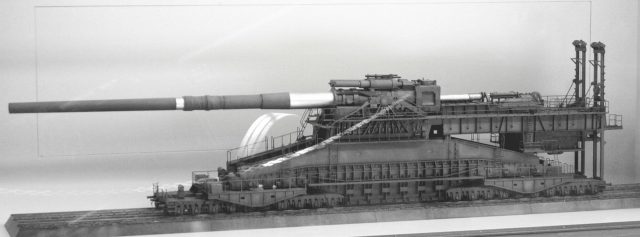
So there it was, the biggest gun the world has ever seen. It was 107 feet long, 23 feet wide, and 38 feet tall, with the weight of 1,350 tons, operated by a crew of 250 soldiers. Another 2,500 were needed to lay down the tracks for its movement, and two Flak battalions were appointed the task of protecting the gun from air attack.
The gun was mounted on a specially designed chassis and moved on two parallel sets of railway tracks, thanks to its 80 wheels. Krupp was also planning to enhance Great Gustav with a long-range missile that could travel more than 90 miles, but this required the barrel to be extended to an unbelievable 275 feet, and the project was never finished.
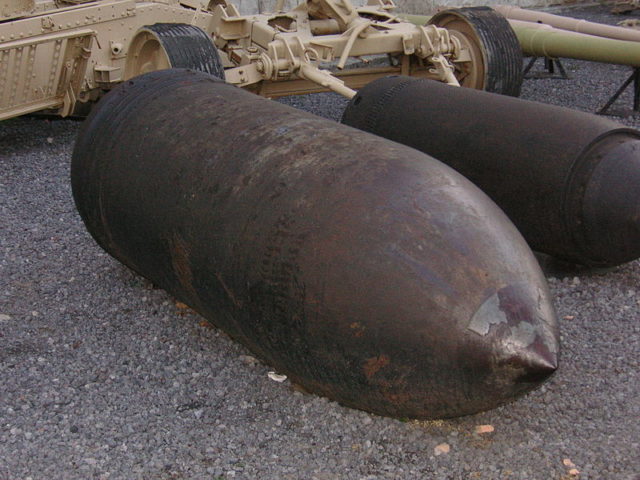
Great Gustav only saw a little action, during the siege of Sevastopol, Russia. It took the German Army a whole month to install the gun, and they used it to fire around 300 shells. The second use was during the Warsaw uprising when the gun fired around 30 shells.
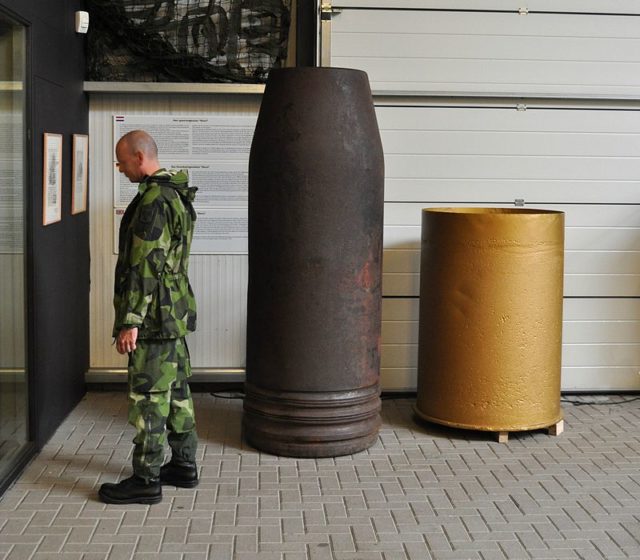
Photo Credit Johan Fredriksson CC BY-SA 3.0
On April 14, 1945, Great Gustav was destroyed in order to prevent its capture. A week later, remains of the destroyed weapon were found abandoned in a forest close to Auerbach. In the summer of the same year, Gustav was transferred to Merseburg, where the Soviet specialists took German weapons for further studies. Since then, all trails of the greatest gun ever built are lost.
The second gun, Dora, had the same destiny. Captured by the American army, the gun was taken to Grafenwöhr, where it was destroyed on April 19, 1945. Even the debris from the gun was scrapped five years later.
There was also a third gun, found in the Krupp’s factory in Essen, but only in parts, as it was never finished. Today, the parts of this gun are on display in the Bundeswehr Military History Museum in Dresden.
